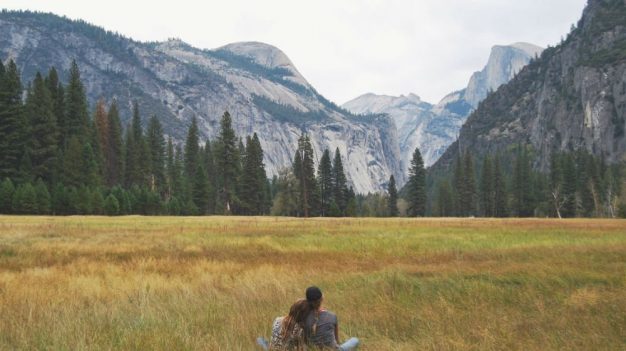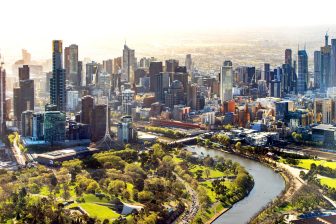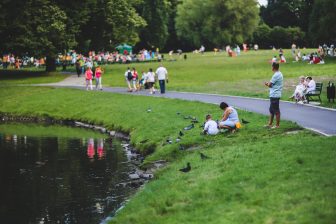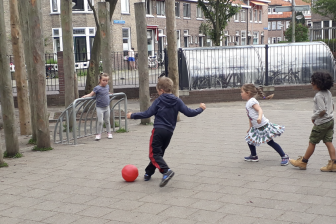
6 reasons why parks matter for health
The National Park Service celebrates its centennial this week, and our national parks have never been more appreciated; visitors made a record-breaking 307.2 million visits to them in 2015. But what many park goers may not realize is that the access to natural scenery and park activities national parks provide play a role in improving health. In fact, research shows that using public parks—even tiny local ones in your neighborhood—contributes to health in a number of ways, from promoting physical activity to improving mental health and even having the potential to reduce health care costs.
To celebrate this milestone in American history, the Culture of Health blog’s editorial team asked six leaders to give us their reasons why parks matter for health.
Here’s what they had to say:
Here’s what they had to say:
Parks foster mental, physical and spiritual health
When we think of national parks, we think of places for people to recreate and connect with nature and their history, but they also provide places for people to have fun, and find mental, physical, and spiritual health, and social wellbeing.
Historically, the justification for the creation of park land in the United States is rooted in public health through the provision of clean air and clean water, and also providing spaces for finding respite from the stressors of everyday life. Yellowstone was established as such a place, and we can look at Hot Springs National Park, where bathing in the hot waters provided opportunities for healing for all people, regardless of income.
Today the National Park Service has more than 400 parks, recreation areas, cultural sites, rivers, trails and historic sites that can serve as “go-to” resources for people’s health and wellbeing. We believe a park visit can influence park visitors to adopt healthier lifestyles. The research is proving this out. For example, fascinating research from Cornell University shows if you think of exercise as being fun—like a scenic walk in the park, or just a break to relax—you will actually eat less and healthier afterwards.
— Diana Allen, Chief, National Park Service Healthy Parks Healthy People National Program
Parks encourage physical activity
Parks are a great way to encourage physical activity and sustain healthy lifestyles. According to a study from the RAND Corporation in 2013, about 14 percent of moderate exercise and 50 percent of vigorous, heart healthy exercise takes place in nearby neighborhood parks.
Even a small and inexpensive park provides great opportunities for exercise. The Trust specializes in helping to create micro parks that we call fitness zone areas. These are small open spaces—less than 1,000 square feet—with outdoor fitness equipment. We focus our efforts almost exclusively in lower income communities, with the logic that higher income communities have access to gyms. So far, we’ve seen both genders and multiple age groups heavily use these fitness zones. We’ve seen three generations of the family working out together and it’s elating!
— Adrian Benepe, Senior Vice President and Director of City Park Development, The Trust for Public Land
Parks advance health equity
We know that there are racial disparities in rates of activity and childhood obesity, particularly in urban areas. Parks with trails and greenway attractions afford activity such as walking and cycling, and those connections allow people to move back and forth between activities. We have cross-sectional data from many studies that suggests people who live close to parks are more active, including children, and adolescents living near parks are less prone to being overweight.
Parks help restore people from the stress of day-to-day challenges, hassles and struggles. That’s especially important for people who are more likely to experience discrimination and its psychological toll. Our national parks can foster a sense of community and shared identity. For example, The National Park Service attempts to tell the American story from diverse angles in its sites of history and antiquity. That helps build community and sustain our identity as Americans. When people can see themselves in these American stories, they feel, ‘We are part of this story, too. We are part of this country and we have made contributions that are recognized.’
— Myron Floyd, PhD, Professor and Department Head in the Department of Parks, Recreation and Tourism Management at North Carolina State University
Parks help kids flourish
Everyone agrees we should be setting kids up for healthy lives no matter where they live. One of the biggest barrier to kids playing is lack of a safe place. So kids come straight home from school and sit on the couch. This leads not only to physical inactivity problem, but disconnection and social isolation. We’re trying to counter these problems by making sure parks are abundant, particularly in low-income communities with high density and high poverty rates.
Parks create an opportunity for kids to enjoy themselves and interact with others in an environment where they’re shielded from adversity in their daily lives. When kids play, they develop higher order cognitive skills that complement classroom learning. They develop problem solving skills—like trying to figure out how to make it all the way across the monkey bars! Or collaboration and teamwork, like negotiating the rules of a game with other kids.
Kids also need space to interact with caring adults which leads to social and emotional health. Parks create a space where they can spend time with their families and learn norms of behavior across the community. Parks and playgrounds are the safety valve, a place where they feel protected.
— James Siegal, CEO, KaBOOM!
Parks are a powerful prescription to combat chronic disease
We’ve got an epidemic of chronic disease on our hands: diabetes and asthma and heart attack and stroke. We’ve got millions of Americans suffering from mental illness and ADHD. This routine of ours—sleeping, eating and sitting 93 percent of the time indoors—is contributing to these diseases and dying prematurely. And people of lower income and people of color tend to fare worse in those disease categories. They’re also the least likely users of green space and likely to benefit most from spending time in it.
There are many studies looking at health benefits to these communities just by virtue of spending time in green space. There’s good evidence that sitting or eating outdoors, even just touching a tree, has a measurable impact on your psychological health. Exposure to sunlight is healing for medical and mental health reasons; upwards of 90 percent of Americans have vitamin D deficiency. Busing people from dense urban areas to go for a hike in a national park has a measurable impact on their blood pressure and stress. Kids with ADHD do as well or better with outside play than they do with medication.
— Robert Zarr, MD, founder of DC Park Rx
We need parks to survive
We need to think about parks holistically—the greener spaces and acreage as well as hard surfaces. Parks contribute to biodiversity that we need as a species to survive. They also help mitigate climate change impact. Having green infrastructure contributes to our air quality and to our water quality—some parks provide storm water retention and water filtration and flooding control. In a heat wave or when air conditions are unavailable, urban residents can go to a park and get some relief and companionship.
The power of parks is that they transcend age, ethnicity, race, income, politics and geography. You know the park is working if you show up on a Sunday, or better yet any day, and see people on a bike or on foot, playing games that celebrate culture and activity from bocci ball to basketball to chess. Space that isn’t programed for particular activities gives us freedom to explore and to discover, to see butterflies and birds and spy larger animals. I see that as a necessary part of our culture and humanity—the free space to play, to gather or to simply be by yourself. We have a need for parks and green space, and to connect with nature, just as surely as we have a need for water. They feed our souls.
— Sharon Roerty, Senior Program Officer, Robert Wood Johnson Foundation
Author: Teresa Mozur from Culture of Health (reblogged)
Photo Credit: photo from Culture of Health




